Have you ever wanted to create your own custom fabric dyes but didn’t know where to start? You’ve come to the right place! In this post, I’ll be sharing how to create fabric dyes from natural elements like fruits, vegetables, plants, and other natural elements.
Natural fabric dyeing is such an awesome way to add vibrant colours to fabrics while minimizing environmental impact. These dyes are sustainable and eco-friendly, and can create some truly stunning hues and colours on fabrics with just a little bit of work.
A Sustainable DIY Project
Sustainability and eco-consciousness has become an important aspect of our lives in the recent years, as we strive to protect and preserve our planet for future generations. Traditional textile dyeing processes often involve harmful chemicals that pose risks to human health and the environment.
Thankfully, natural dyeing offers a sustainable solution. By harnessing the power of nature’s very own colour palette, we can reduce our ecological footprint and contribute to a more sustainable future!
Natural dyes are derived from renewable resources and are biodegradable, ensuring that the dyeing process has minimal impact on ecosystems.
Additionally, the use of natural dyes supports local farming communities, as many dye materials can be sourced from plants and crops cultivated sustainably.
By embracing natural dyeing techniques, we can reduce water pollution, conserve energy, and foster a more conscious and responsible approach to textile production.
The Joy of DIY Natural Dyeing
One of the most wonderful aspects of natural dyeing is that it can be a fun and engaging DIY project! Whether you are an experienced textile artist or a curious beginner, experimenting with natural dyes allows you to unleash your creativity and explore the wonders of colour creation.
It connects us with nature and fosters a deeper appreciation for the world around us. Moreover, natural dyeing provides a sense of satisfaction and fulfilment as you witness the transformation of plain fabrics into unique and visually captivating pieces.
The outcomes of natural dyeing are truly remarkable. Each dye material holds its distinct characteristics, resulting in colours that exhibit depth, variation, and subtle nuances. Natural dyes create a sense of connection to the Earth, with colours that evoke the seasons, landscapes, and natural beauty.
Here are 10 natural dyes that you can experiment with!
Indigo
Indigo, a plant-based dye with a rich history, produces fascinating shades of blue. It is obtained from the leaves of the Indigofera Tinctoria plant. This dye is highly regarded for its ability to create deep, denim-like blues. Indigo dyeing techniques, such as shibori, offer unique patterns and effects that make each piece truly one-of-a-kind!
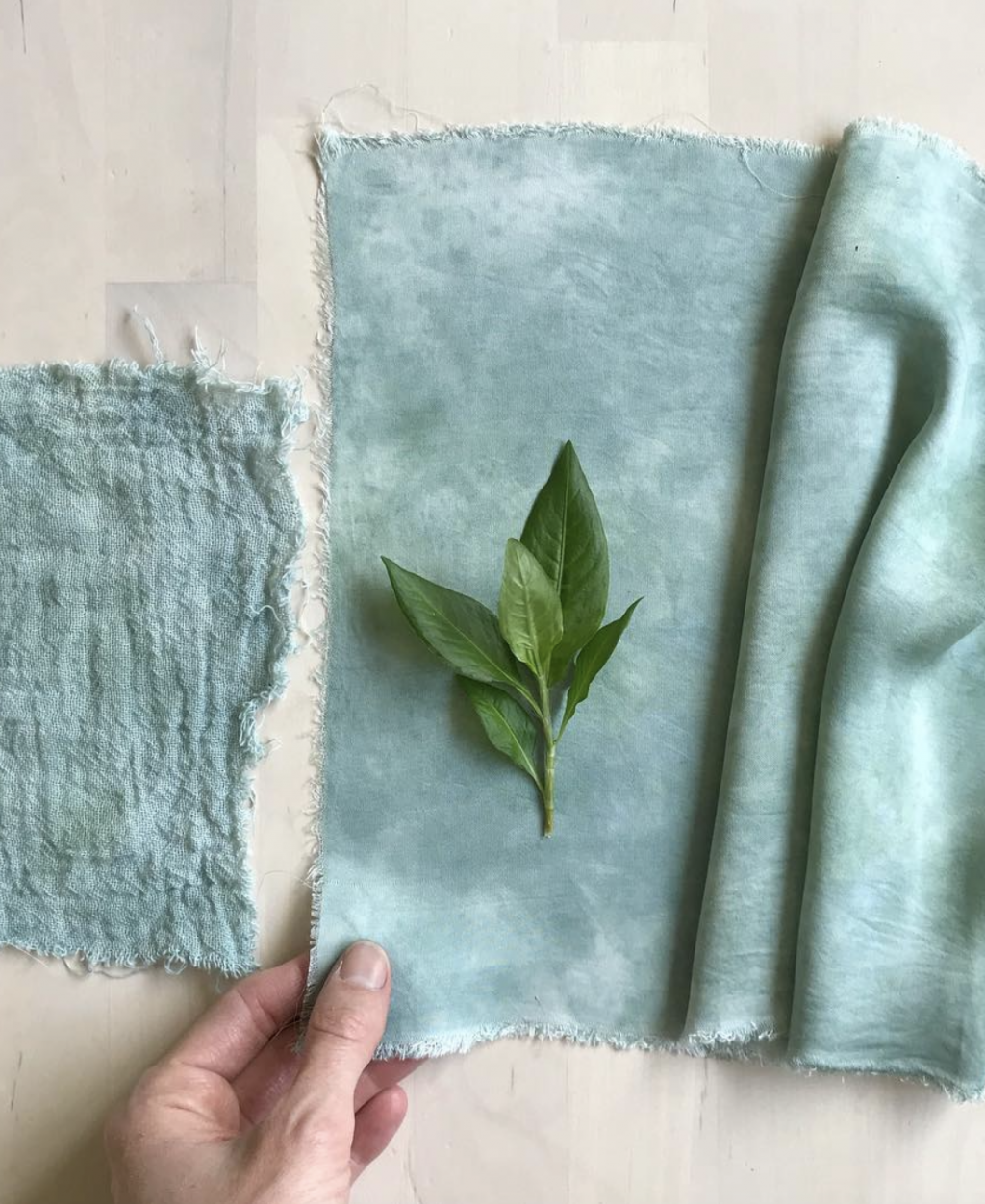
Turmeric
With its vibrant golden-yellow hue, turmeric is a popular choice for natural dyeing. This spice can be used to achieve bright, warm yellows on various fabrics. Turmeric’s intense colour makes it a versatile dye that can create striking patterns and designs on textiles.
However, turmeric’s benefits extend beyond its visual appeal. It possesses natural antibacterial properties, making it an excellent choice for dyeing textiles intended for everyday use. This property is particularly beneficial for items like kitchen towels, napkins, and clothing that come into regular contact with the skin.
Furthermore, turmeric is easily accessible and affordable, making it an attractive option for those interested in experimenting with natural dyeing. Its versatility allows for various dyeing techniques, including immersion dyeing, tie-dyeing, or even block printing.
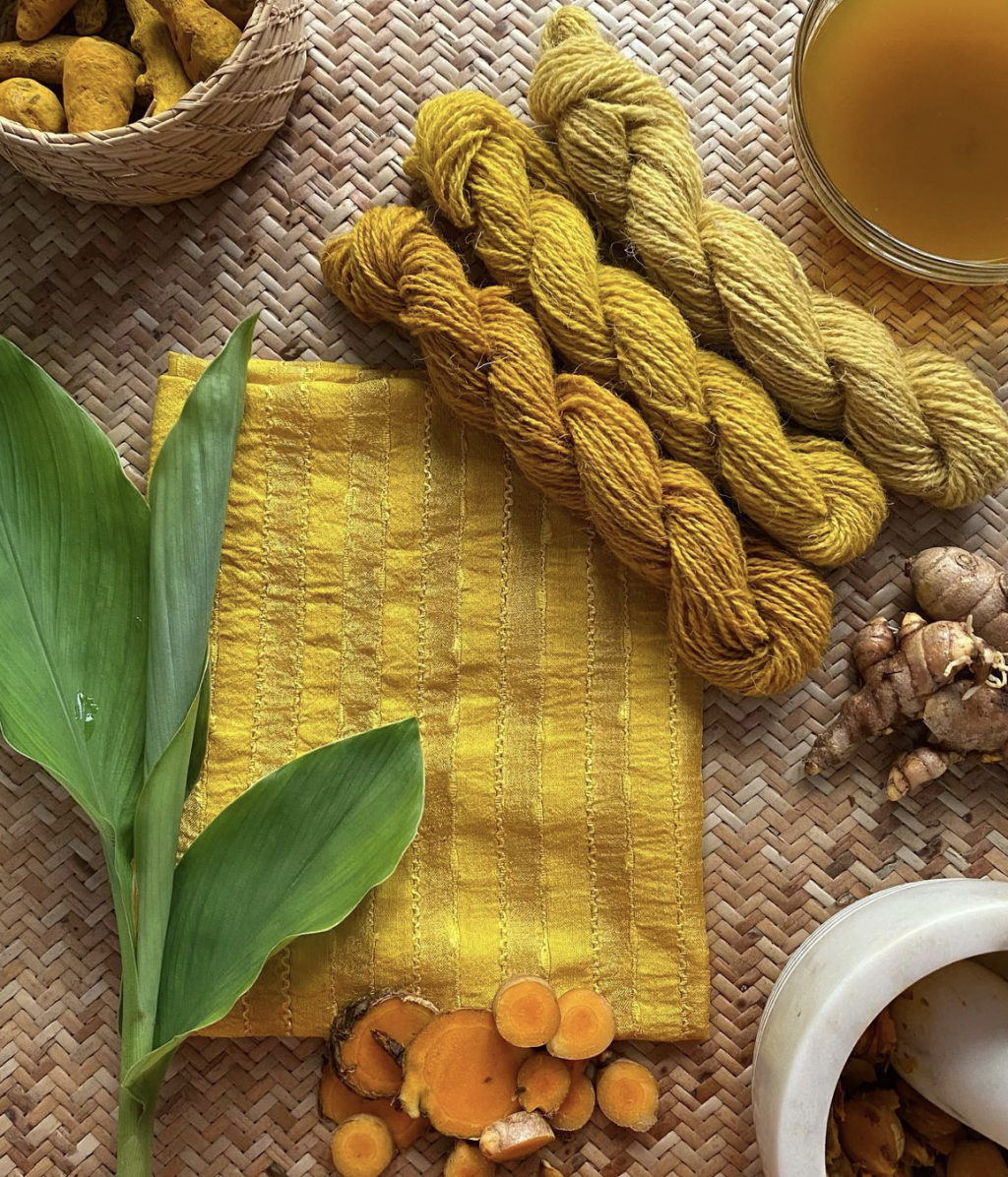
Beetroot
For a range of pink and reddish hues, beetroot is an ideal natural dye. The pigments present in beetroot can create subtle shades of pink on fabrics, adding a touch of natural elegance to your creations.
Depending on the concentration and duration of the dyeing process, you can achieve various intensities, from soft blush tones to vibrant reds. This versatility allows for experimentation and customisation, making each dyeing project truly unique!
Also, beetroot is readily available in most grocery stores or can be grown in home gardens! It is an inexpensive dye material, making it an affordable option for those who are new to natural dyeing or wish to experiment with different shades.
Whether you’re dyeing clothing, linens, or other textiles, beetroot offers a versatile and accessible option for achieving lovely pink and reddish colours. So, embrace the beauty of beetroot and let its natural pigments infuse your fabrics with elegance and charm, all while indulging in the wonders of sustainable and eco-friendly dyeing!
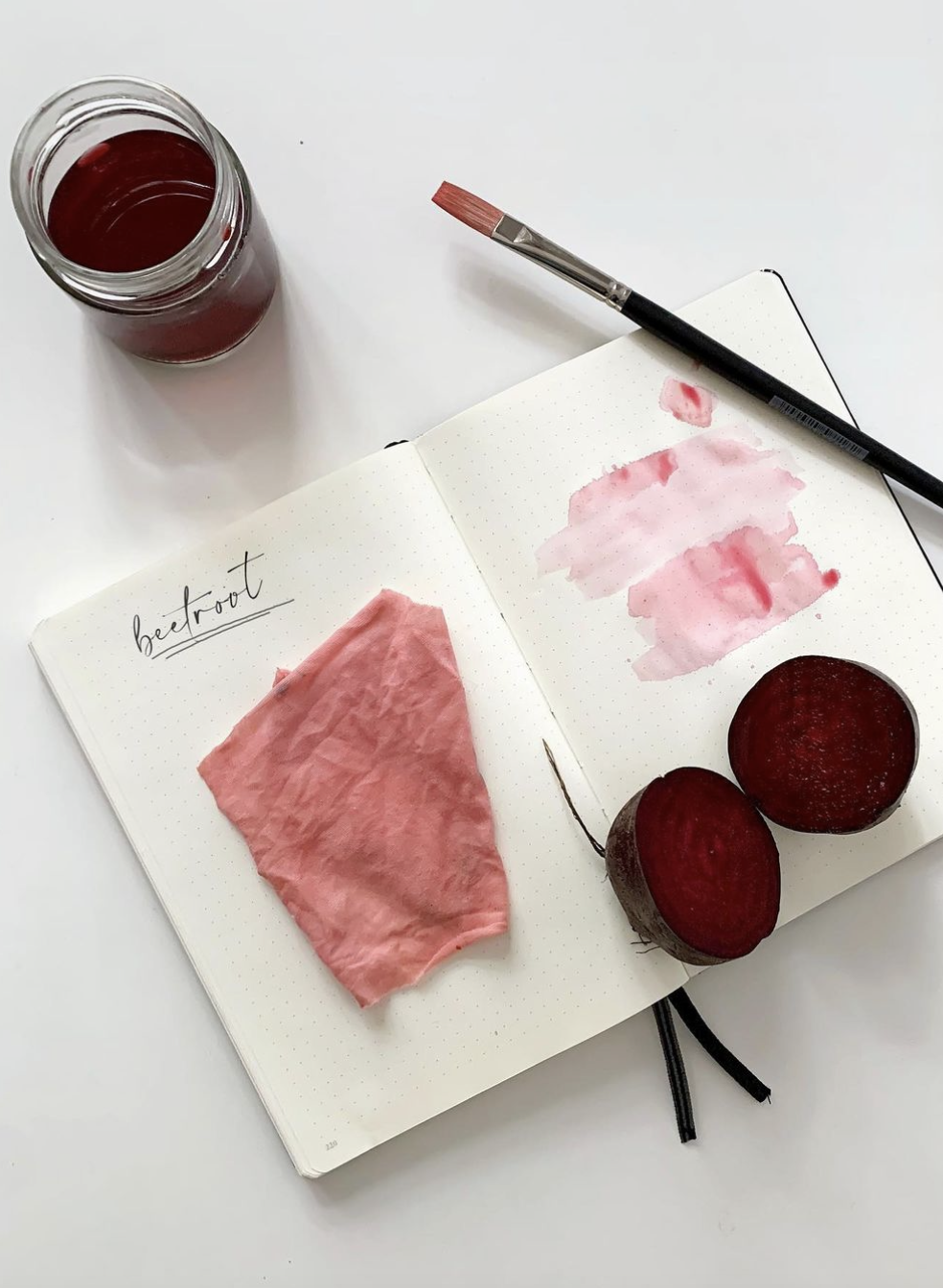
Onion Skins
Often discarded as waste, onion skins can be transformed into a beautiful natural dye that yields warm and earthy tones! By simmering the onion skins, you can extract a range of shades from light yellows to deep oranges and rich browns, adding depth and character to your fabrics.
Onion skin dyeing is a fantastic way to repurpose what would typically be thrown away, turning it into a valuable resource for creating unique colours. This makes it a very eco-friendly and sustainable option for natural dyeing.
By giving new life to onion skins, you contribute to reducing waste and minimizing the environmental impact associated with textile production.
Not to forget that the colours obtained from onion skins evoke a sense of natural beauty and rustic charm! The warm and earthy tones they produce are reminiscent of nature’s autumnal palette, bringing a cosy and organic feel to your fabrics.
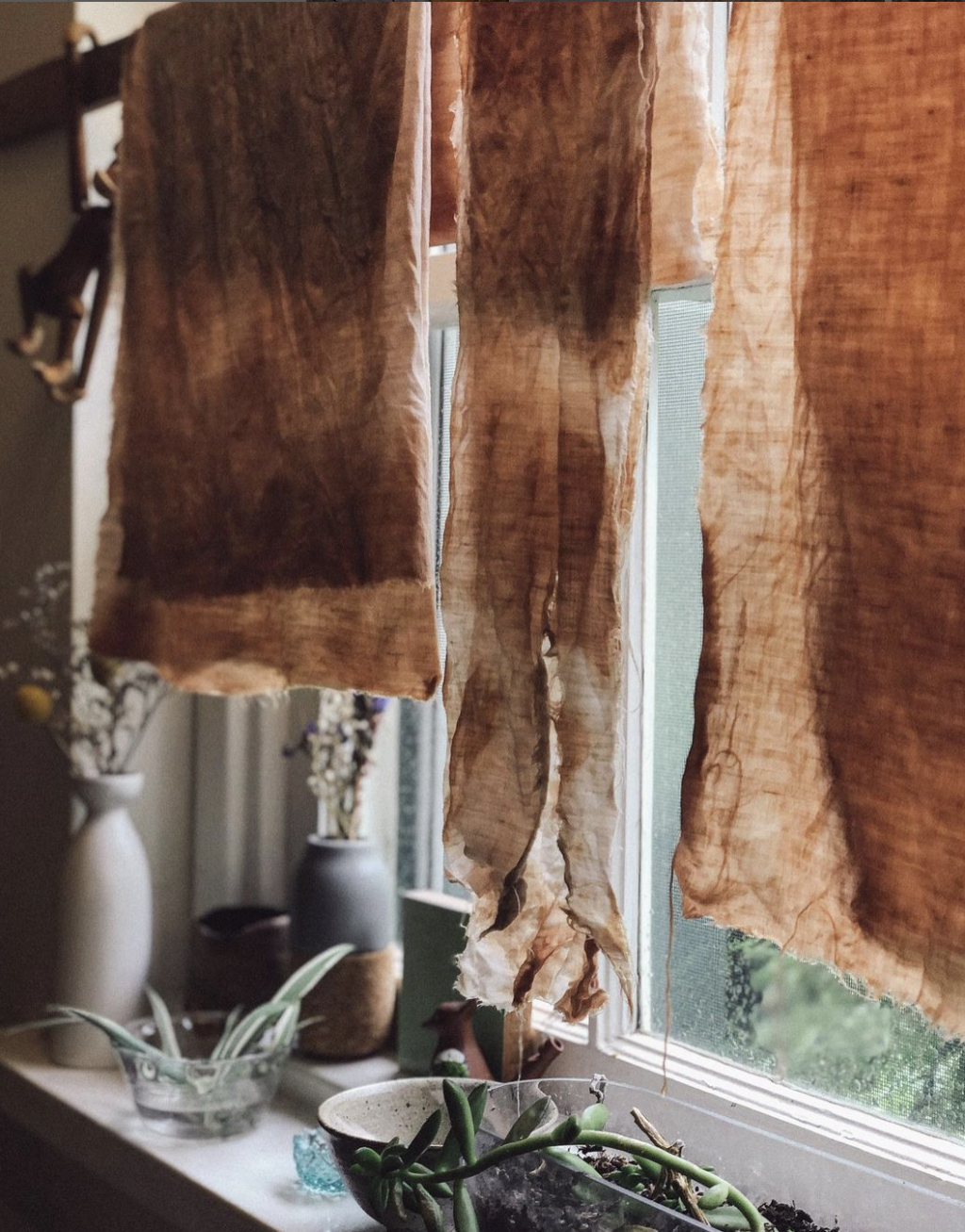
Avocado Pits and Skins
Don’t throw away your avocado pits and skins!
Avocado pits and skins, often discarded as kitchen waste, can be repurposed to create beautiful natural dyes. These dyes produce a range of lovely pinks, blush tones, and light peach colours, adding a delicate touch to fabrics.
As with any natural dye, the longevity of avocado-dyed fabrics can be enhanced by proper care. It is recommended to wash them in cool water with mild detergent and avoid exposure to direct sunlight for extended periods!
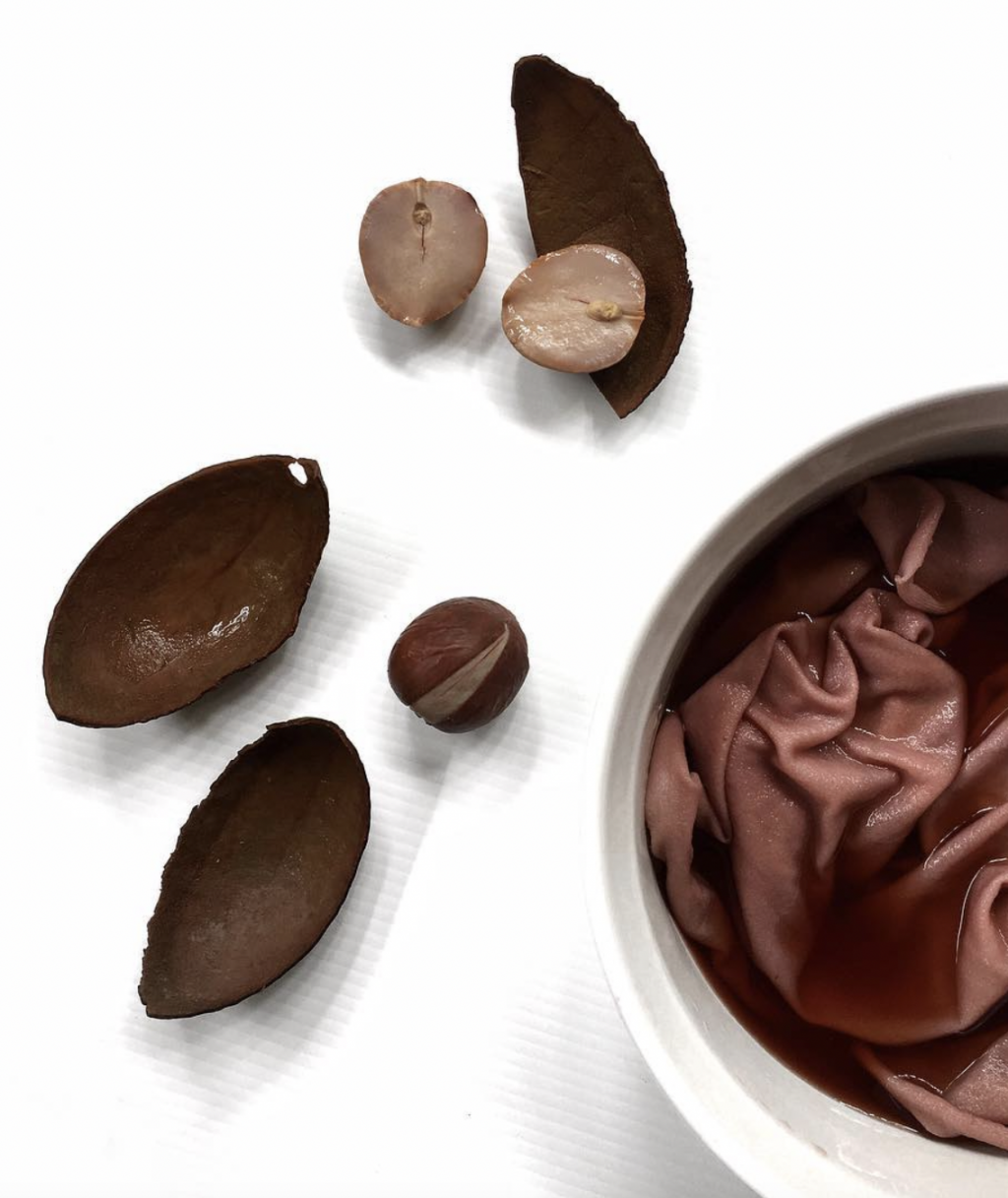
Logwood
Derived from the heartwood of trees, logwood is a natural dye that offers a diverse range of colours, including deep purples, greys, and blues.
One of the remarkable qualities of logwood dye is its exceptional ‘colourfastness’. Colourfastness refers to the ability of a dye to retain its vibrancy even after repeated washing or exposure to sunlight. This means that your dyed textiles will maintain their beauty and intensity over time, allowing you to enjoy them for years to come – Making them even more sustainable!
Logwood dye is well-suited for various fabric types, including natural fibres like cotton, linen, silk, and wool. From bold purples for statement pieces to subdued greys and blues for a more understated look, logwood dye offers a wide range of options to suit different design aesthetics.
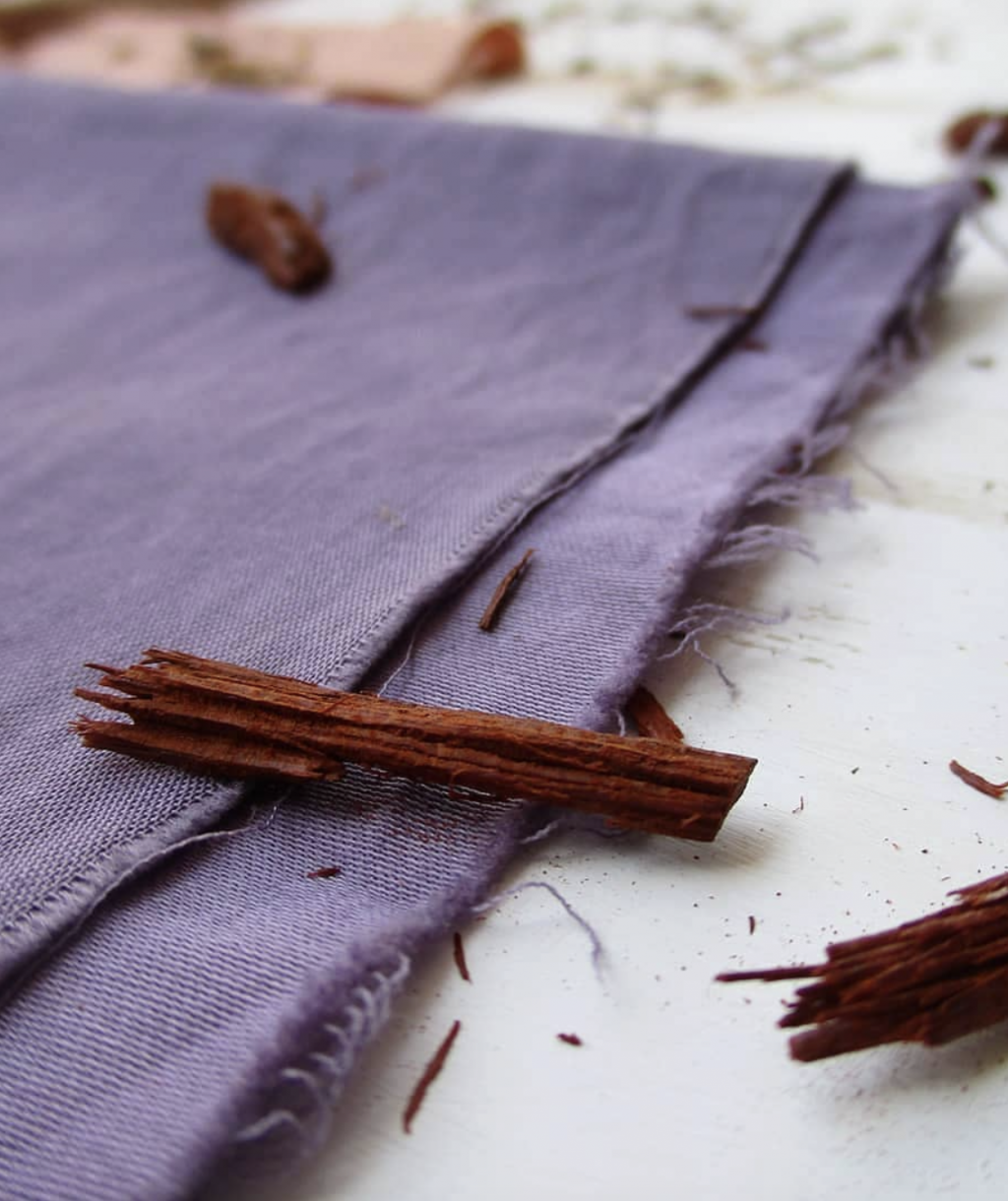
Marigold Flowers
Marigold flowers, with their vibrant hues of yellow and orange, hold rich natural pigments that can be used to create stunning dyes! These flowers contain lutein, a powerful pigment known for its dyeing properties, making marigold dye an excellent choice for adding a touch of brightness and warmth to fabrics.
The colours obtained from marigold flowers range from sunny yellows to rich oranges, which add a lovely sense of joy and vibrancy to any piece! Whether you’re dyeing garments, accessories, or home textiles, the marigold dye can infuse your creations with a burst of cheerful and uplifting colours.
Not only can the dyeing itself be a fun and rewarding DIY project, using marigolds also allows you to engage with nature! Harvesting marigold flowers from your garden or sourcing them locally adds an element of connection to the natural world and a sense of satisfaction when witnessing the transformation of the flowers into vibrant dyes.
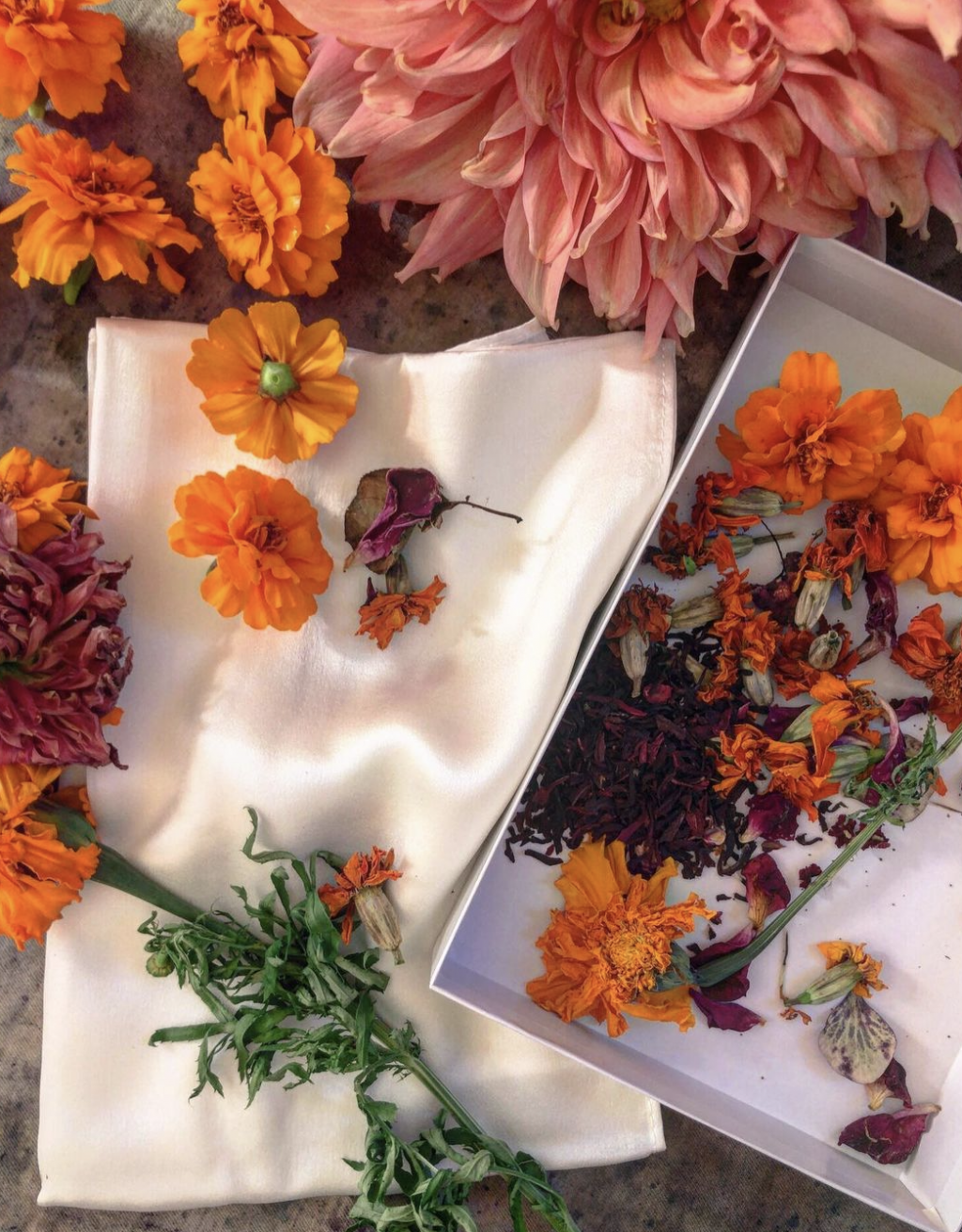
Cochineal Insects
Found on the pads of prickly pear cacti, Cochineal Insects offer a great source of natural dye that produces a range of intense reds, pinks, and purples.
These tiny creatures contain carminic acid, a potent pigment that has been used for centuries to create the renowned colour known as “carmine’ which is extracted by crushing them to release the pigment-rich liquid.
The historical significance of cochineal dye is fascinating! It has been used by various civilizations, including the ancient Aztecs and Mayans.
Cochineal dye played a significant role in trade and commerce, with its rich reds being sought after by artists, textile producers, and even royalty. Today, cochineal dye continues to be highly regarded for its ability to create intense and enduring colours.
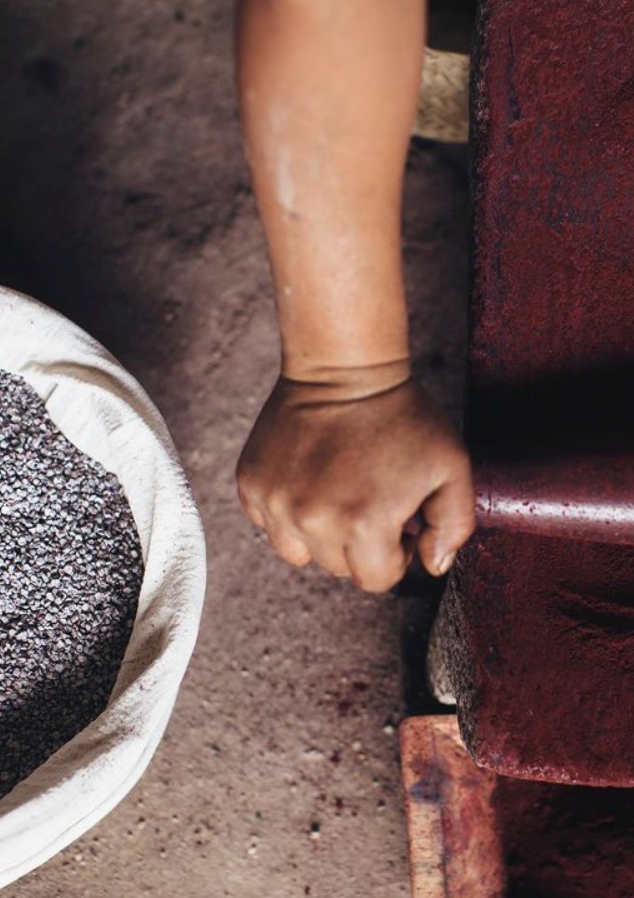
Walnut Shells
Walnut shells offer a wonderful source of natural dye that can be transformed into lovely earthy browns and warm, muted yellows.
They are great at achieving vintage or rustic aesthetics on textiles. The earthy browns produced by walnut dye can lend a sense of warmth, depth, and antiquity to fabrics, creating a nostalgic and timeless appeal.
These natural hues are perfect for creating a rustic, farmhouse-inspired look or adding a vintage touch to garments, accessories, or home decor items.
To preserve the colour intensity, it’s advisable to avoid excessive exposure to direct sunlight, as natural dyes may experience some degree of fading over time. By following proper care instructions, you can ensure that your walnut-dyed fabrics maintain their rustic beauty for an extended period.
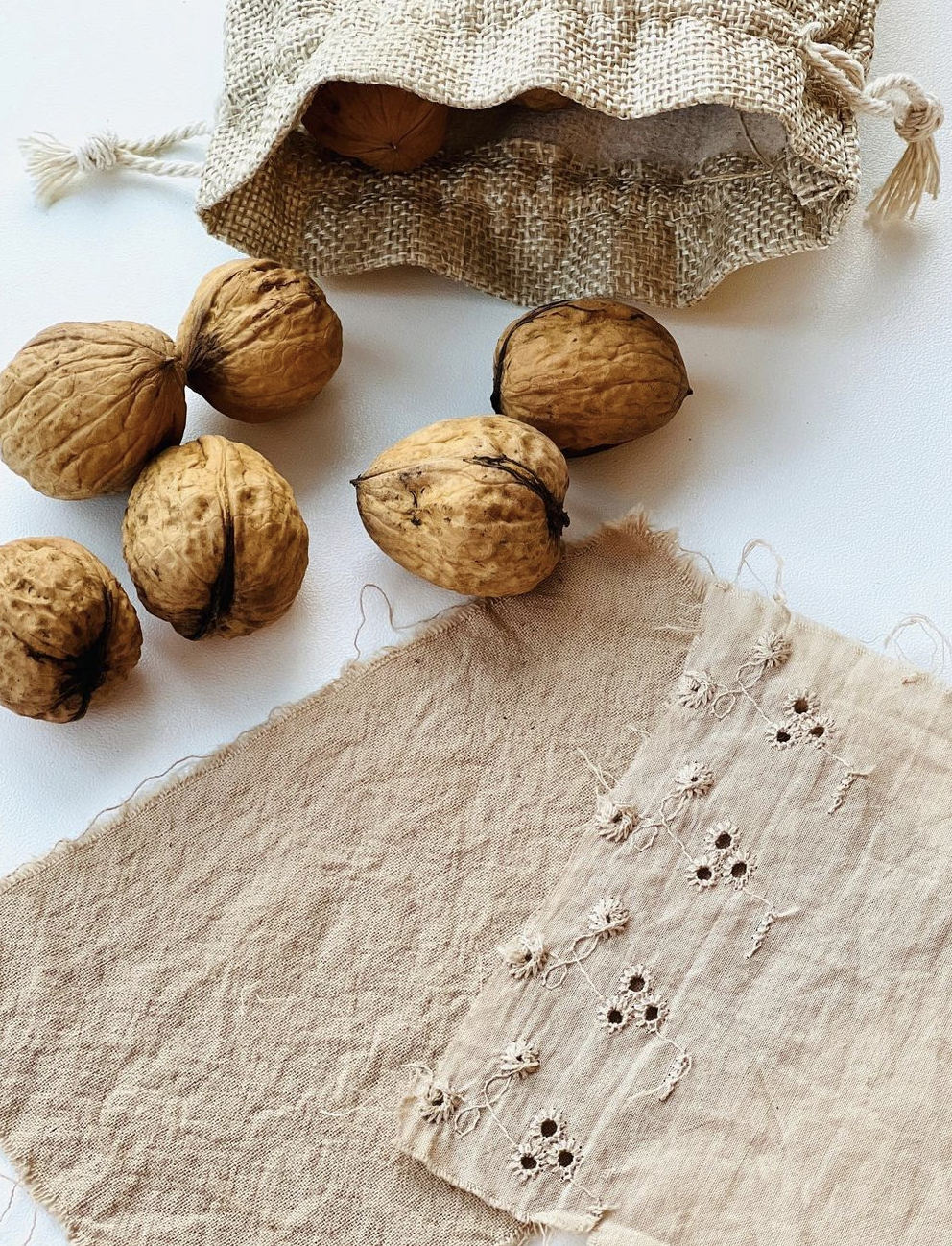
Madder Root
This versatile plant offers a wide spectrum of colours, ranging from delicate pale pinks to deep oranges and vibrant reds. With its ability to produce vibrant and long-lasting hues, madder root has been used for centuries as a reliable source of dye that withstands the test of time.
Beyond its visual appeal, madder root dye carries a sense of history and tradition. It has been utilized for centuries across different cultures and regions. The knowledge and techniques associated with madder root dyeing have been passed down through generations, making it a valuable part of cultural heritage.
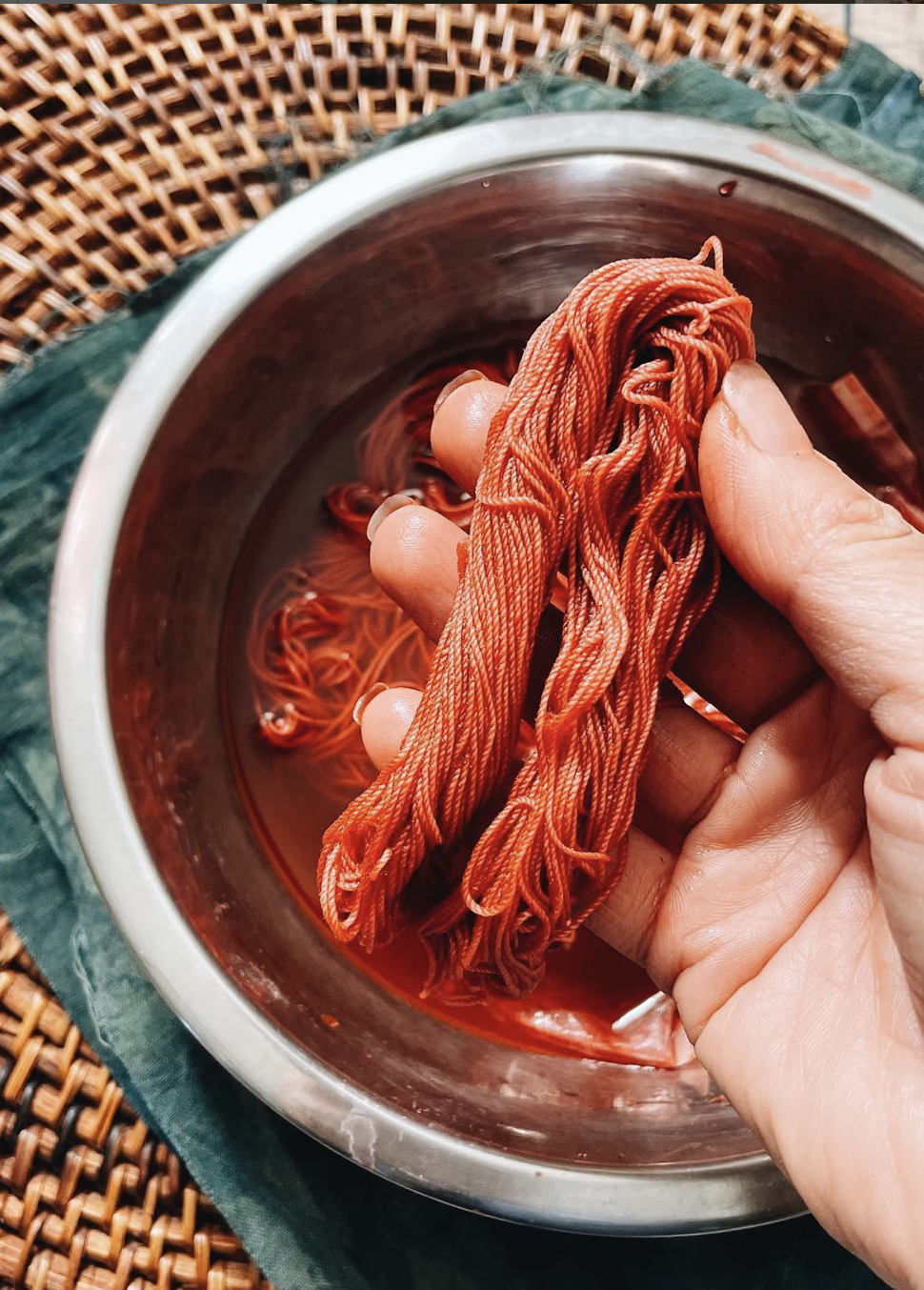
Now that you’ve learned about some of the natural sources for dyes and the colours they generate, let’s talk about how to create the dyes themselves!
How to Create Natural Dyes from Fruits, Vegetables, and Plants
Step 1: Preparing the Fabric
Before dyeing your fabric, it is crucial to prepare it properly to ensure optimal color absorption.
1) Choose natural fibers such as cotton, linen, silk, or wool, as they tend to absorb dyes more effectively.
2) Wash the fabric thoroughly to remove any dirt, chemicals, or finishes that might hinder the dye absorption.
3) If the fabric is made of cellulose fibers like cotton or linen, pre-treat it with a mordant solution to enhance colorfastness. Common mordants include alum, iron, and vinegar. Follow the mordant instructions carefully and rinse the fabric before dyeing.
Step 2: Extracting the Dye
Now that you have selected your natural ingredients and prepared your fabric, it’s time to extract the dye! The process may vary depending on the ingredient chosen, but here’s a general approach:
1) Chop or crush the fruits, vegetables, or natural elements into small pieces to maximize the surface area for pigment release.
2) Place the chopped ingredients in a stainless steel or enamel pot and add enough water to cover them completely.
3) Simmer the mixture over low heat for an extended period, typically 1-2 hours, stirring occasionally to extract the dye.
4) Once the liquid has absorbed the desired color, strain it to remove any solids, obtaining a concentrated dye solution.
Step 3: Dyeing Process
With your dye solution ready, it’s time to add color to your fabric:
1) Wet the fabric thoroughly to ensure even color absorption.
2) Immerse the fabric into the dye bath, making sure it has enough room to move freely.
3) Simmer the fabric in the dye bath over low heat for about an hour, stirring occasionally to achieve uniform color distribution.
4) For deeper shades or stronger color intensity, extend the dyeing time or repeat the process.
Step 4: Setting the Color:
To ensure your newly dyed fabric retains its color over time, it’s crucial to permanently set the dye. Here’s how:
1) Rinse the dyed fabric with cold water until the water runs clear, removing any excess dye.
2) If you used a mordant, apply a fixing agent such as salt or vinegar to help set the color. Follow the instructions provided for the specific mordant used.
3) After applying the fixing agent, rinse the fabric again to remove any residual dye or chemicals.
4) Hang the fabric to dry away from direct sunlight to avoid any fading.
Enjoy your custom, naturally dyed fabric!
PIN THIS:
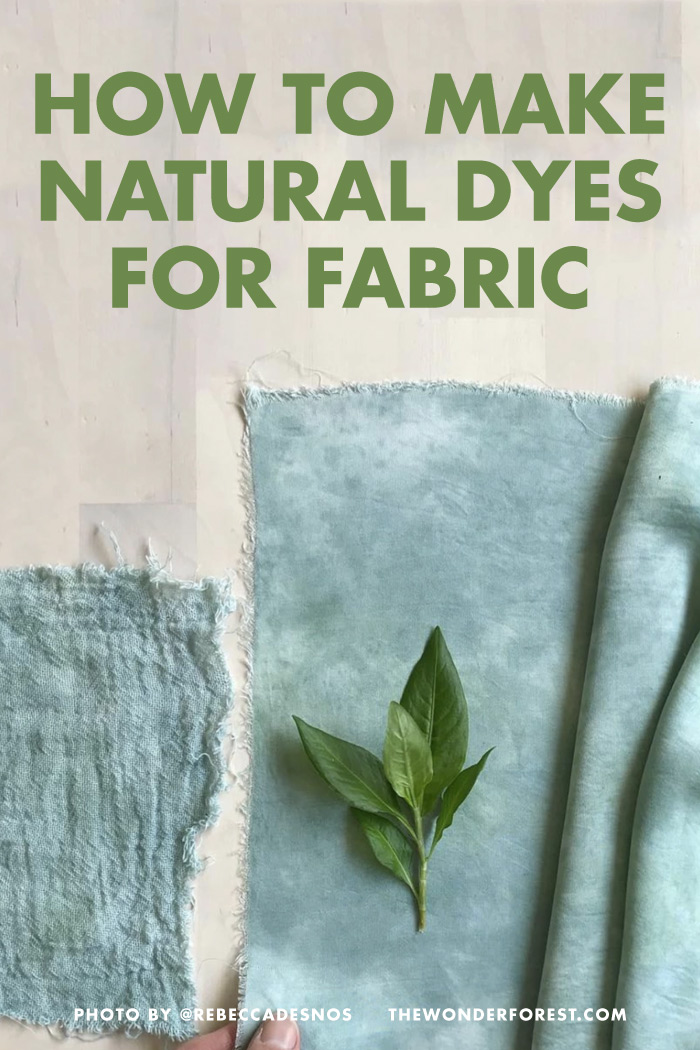
Last Updated on
